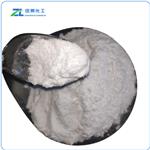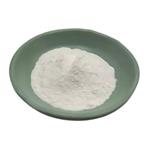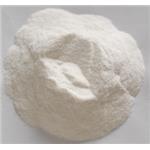Hydroxypropyl cellulose
- CAS No.
- 9004-64-2
- Chemical Name:
- Hydroxypropyl cellulose
- Synonyms
- HPC;hydroxypropyl;L-HPC;KLUCEL;Hyprolose;Low-Substituted Hydroxypropyl cellulose;Hydroxypropyl cellulose - Average MW 80,000;Hydroxypropyl cellulose - Average MW 370,000;Hydroxypropyl cellulose - Average MW 1,000,000;Hydroxypropyl cellulose - Average MW 50,000 - 1250,000
- CBNumber:
- CB0241870
- Molecular Formula:
- C3H7O*
- Molecular Weight:
- 59.08708
- MDL Number:
- MFCD00132688
- MOL File:
- 9004-64-2.mol
- MSDS File:
- SDS
| Melting point | 371.06 °C |
|---|---|
| Density | 0.5 g/mL at 25 °C (lit.) |
| storage temp. | Room Temperature |
| solubility | polar oganic solvents: soluble |
| form | powder |
| color | White to light cream |
| PH Range | 5.0 - 8.5 |
| PH | pH (20g/l, 25℃) : 5.0~7.5 |
| Odor | at 100.00?%. odorless |
| Viscosity | 3.0 to 6.0 mPa-s (2 %, H2O, 20℃) |
| Water Solubility | Soluble in polar organic solvents, in water at room temperature.Soluble in water, methyl alcohol, ethyl alcohol and other organic solvents. |
| Merck | 14,4841 |
| Stability | Stable. Incompatible with strong oxidizing agents. Combustible. |
| InChI | InChI=1S/CH4/h1H4 |
| InChIKey | VNWKTOKETHGBQD-UHFFFAOYSA-N |
| SMILES | C |
| FDA 21 CFR | 172.870; 73.1001 |
| Substances Added to Food (formerly EAFUS) | HYDROXYPROPYL CELLULOSE |
| CAS DataBase Reference | 9004-64-2 |
| EWG's Food Scores | 1 |
| FDA UNII |
HYDROXYPROPYL CELLULOSE (160000 WAMW) (0A7M0N7SPE) HYDROXYPROPYL CELLULOSE (650000 WAMW) (1L0RPI3ASP) LOW-SUBSTITUTED HYDROXYPROPYL CELLULOSE, UNSPECIFIED (2165RE0K14) HYDROXYPROPYL CELLULOSE (110000 WAMW) (5Y0974F5PW) LOW-SUBSTITUTED HYDROXYPROPYL CELLULOSE (11% HYDROXYPROPYL; 140000 MW) (599BTP6K9F) |
| EPA Substance Registry System | Cellulose, 2-hydroxypropyl ether (9004-64-2) |
SAFETY
Risk and Safety Statements
| Symbol(GHS) |  GHS07 |
|||||||||
|---|---|---|---|---|---|---|---|---|---|---|
| Signal word | Warning | |||||||||
| Hazard statements | H302-H335-H332-H319-H315 | |||||||||
| Precautionary statements | P261-P271-P304+P340-P312-P264-P280-P305+P351+P338-P337+P313P-P264-P270-P301+P312-P330-P501-P264-P280-P302+P352-P321-P332+P313-P362 | |||||||||
| Safety Statements | 24/25 | |||||||||
| WGK Germany | 1 | |||||||||
| RTECS | NF9050000 | |||||||||
| F | 3-10 | |||||||||
| Autoignition Temperature | 752 °F | |||||||||
| TSCA | Yes | |||||||||
| HS Code | 39129000 | |||||||||
| NFPA 704 |
|
Hydroxypropyl cellulose price More Price(59)
| Manufacturer | Product number | Product description | CAS number | Packaging | Price | Updated | Buy |
|---|---|---|---|---|---|---|---|
| Sigma-Aldrich | 191884 | Hydroxypropyl cellulose ≥99.0% (sum of enantiomers, GC) | 9004-64-2 | 5g | $38.64 | 2024-03-01 | Buy |
| Sigma-Aldrich | 1329800 | Hydroxypropyl cellulose United States Pharmacopeia (USP) Reference Standard | 9004-64-2 | 500mg | $474 | 2024-03-01 | Buy |
| TCI Chemical | H0386 | Hydroxypropyl Cellulose (150-400mPa.s, 2% in Water at 20°C) | 9004-64-2 | 25g | $35 | 2024-03-01 | Buy |
| TCI Chemical | H0386 | Hydroxypropyl Cellulose (150-400mPa.s, 2% in Water at 20°C) | 9004-64-2 | 500g | $148 | 2024-03-01 | Buy |
| Alfa Aesar | 043400 | Hydroxypropyl cellulose, M.W. 100,000 | 9004-64-2 | 25g | $40.2 | 2024-03-01 | Buy |
Hydroxypropyl cellulose Chemical Properties,Uses,Production
Description
Hydroxypropyl cellulose (HPC) is a derivative of cellulose being soluble in both water and organic acid. It is excellent in trapping water and preventing water loss. It can be used to treat diseases associated with insufficient tear production such as keratoconjunctivitis sicca, recurrent corneal erosions, decreased corneal sensitivity, and exposure and neuroparalytic keratitis. It is also used as a lubricant of artificial eyes. It can also be used as a thickener, an emulsion stabilizer and binder. Moreover, it can be used as a sieving matrix for DNA separation through capillary and microchip electrophoresis. It is also the major ingredient of Cellugel, which is used in book conservation.
References
https://www.drugbank.ca/drugs/DB00840
https://en.wikipedia.org/wiki/Hydroxypropyl_cellulose
Description
Hydroxypropyl cellulose is a cellulose ether containing hydroxypropyl substitution. It occurs as a white powder. It is soluble in water and in certain organic solvents. It may contain a suitable anticaking agent.
Chemical Properties
White or yellowish-white powder or granules, hygroscopic after drying
Chemical Properties
Hydroxypropyl cellulose is a white to slightly yellow-colored, odorless and tasteless powder.
Originator
Lacrisert,MSD,US,1981
Uses
Hydroxypropyl Cellulose is a gum that is nonionic water-soluble cellulose, obtained from the reaction of alkali cellulose with propyl- ene oxide at high temperatures and pressures. it is soluble in water below 40°c, is precipitated as a floc between 40°c and 45°c, and is insoluble above 45°c. the precipitation is reversible with the origi- nal viscosity being restored upon cooling below 40°c and stirring. it is used in whipped toppings as a stabilizing and foaming aid; in edible food coatings as a glaze and oil/oxygen barrier; and in fabri- cated foods as a binder. typical usage level is 0.05–1.0%.
Uses
As emulsifier, stabilizer, whipping aid, protective colloid, film former or thickener in foods; as binder in ceramics and glazes; in hair and cosmetic Preparations; in vacuum-formed containers and blow-molded bottles; as suspending agent in PVC polymerization. Pharmaceutic aid (tablet coating agent).
Uses
Hydroxypropyl Cellulose is used in the synthesis of nanoparticle carriers for drug delivery.
Definition
A cellulose ether with hydroxypropyl substitution.
Production Methods
A purified form of cellulose is reacted with sodium hydroxide to produce a swollen alkali cellulose that is chemically more reactive than untreated cellulose. The alkali cellulose is then reacted with propylene oxide at elevated temperature and pressure. The propylene oxide can be substituted on the cellulose through an ether linkage at the three reactive hydroxyls present on each anhydroglucose monomer unit of the cellulose chain. Etherification takes place in such a way that hydroxypropyl substituent groups contain almost entirely secondary hydroxyls. The secondary hydroxyl present in the side chain is available for further reaction with the propylene oxide, and ‘chaining-out’ may take place. Thisresults in the formation of side chains containing more than 1 mole of combined propylene oxide.
Manufacturing Process
Charge:
Procedure:
The tertiary butanol, water and sodium hydroxide were mixed and the mixture
cooled to 20°C. The purified cotton linters were added to the mixture and
aged at 20°C for one hour while stirring. Excess liquid was filtered off the
resulting alkali cellulose so that the resulting alkali cellulose filter cake
weighed 3.08 parts. This filter cake was broken up and slurried in the hexane,
placed in a pressure vessel the pressure of which was increased to 100 psig
with nitrogen, and then the pressure was vented to 5 psig. The propylene
oxide was added to the pressure vessel and then the pressure was increased
to 25 psig with nitrogen. The resulting charge was heated to 85°C in 30
minutes and then reacted at this temperature and 25 psig pressure for six
hours. The charge was cooled to 30°C. the pressure vessel vented and 0.14
part of glacial acetic acid added. The excess hexane was filtered off from the
resulting hydroxypropyl cellulose product, the product was purified by washing
with hot water (85°C to 95°C) and then dried at 130°C using a two-roll drum
drier.
Therapeutic Function
Topical protectant, Ophthalmic vehicle
General Description
Hydroxypropyl cellulose (HPC) is biocompatible in nature and exhibits low critical solution temperature (LCST). It has been reported to be prepared by reacting cellulose with alkali, producing alkali cellulose which is consecutively reacted with propylene oxide. HPC is soluble in water at lower than RT. Viscosity behaves inversely to rise in temperature.
Pharmaceutical Applications
Hydroxypropyl cellulose is widely used in oral and topical pharmaceutical formulations.
In oral products, hydroxypropyl cellulose is primarily used in tableting as a binder,film-coating,and extended-release-matrix former. Concentrations of hydroxypropyl cellulose of 2–6% w/w may be used as a binder in either wet-granulation or dry, direct compression tableting processes. Concentrations of 15–35% w/w of hydroxypropyl cellulose may be used to produce tablets with an extended drug release. The release rate of a drug increases with decreasing viscosity of hydroxypropyl cellulose. The addition of an anionic surfactant similarly increases the viscosity of hydroxypropyl cellulose and hence decreases the release rate of a drug. Blends of hydroxypropyl cellulose and other cellulosic polymers have been used to improve wet granulation characteristics and tableting characteristics, as well as to achieve better control and manipulation of the rate of drug release. As an alternative technology to wet granulation, dry granulation and direct compression of hydroxypropyl cellulose formulations have been reported to exhibit acceptable tableting and flow characteristics for application in extended-release matrix tablets. Typically, a 5% w/w solution of hydroxypropyl cellulose may be used to film-coat tablets. Aqueous solutions containing hydroxypropyl cellulose together with an amount of methyl cellulose or ethanolic solutions have been used. Stearic acid or palmitic acid may be added to ethanolic hydroxypropyl cellulose solutions as plasticizers. Environmental concerns have limited the use of ethanol in film coating solutions. A low-substituted hydroxypropyl cellulose is used as a tablet disintegrant; see Hydroxypropyl Cellulose, Low-substituted.
Hydroxypropyl cellulose is also used in microencapsulation processes and as a thickening agent. In topical formulations, hydroxypropyl cellulose is used in transdermal patches and ophthalmic preparations.
Hydroxypropyl cellulose is also used in cosmetics and in food products as an emulsifier and stabilizer.
Safety
Hydroxypropyl cellulose is widely used as an excipient in oral and
topical pharmaceutical formulations. It is also used extensively in
cosmetics and food products.
Hydroxypropyl cellulose is generally regarded as an essentially
nontoxic and nonirritant material. It is not absorbed from the
gastrointestinal tract and is fully recovered in feces after oral
administration in rats. It does not exhibit skin irritation or skin
sensitization. However, the use of hydroxypropyl cellulose as a solid
ocular insert has been associated with rare reports of discomfort or
irritation, including hypersensitivity and edema of the eyelids.
Adverse reactions to hydroxypropyl cellulose are rare. However, it
has been reported that a single patient developed contact dermatitis
due to hydroxypropyl cellulose in a transdermal estradiol patch.
The WHO has specified an acceptable daily intake for
hydroxypropyl cellulose of up to 1500 mg/kg body-weight.
Excessive consumption of hydroxypropyl cellulose may have a
laxative effect.
LD50 (rat, IV): 0.25 g/kg
LD50 (rat, oral): 10.2 g/kg
storage
Hydroxypropyl cellulose powder is a stable material, although it is
hygroscopic after drying.
Aqueous solutions of hydroxypropyl cellulose are stable at pH
6.0–8.0, with the viscosity of solutions being relatively unaffected.
However, at low pH aqueous solutions may undergo acid
hydrolysis, resulting in chain scission and hence a decrease in
solution viscosity. The rate of hydrolysis increases with increasing
temperature and hydrogen ion concentration. At high pH, alkalicatalyzed
oxidation may degrade the polymer and result in a
decrease in viscosity of solutions. This degradation can occur owing
to the presence of dissolved oxygen or oxidizing agents in a
solution.
Increasing temperature causes the viscosity of aqueous solutions
to decrease gradually until the viscosity drops suddenly at about
45°C owing to the limited solubility of hydroxypropyl cellulose.
However, this process is reversible and on cooling the original
viscosity is restored.
The high level of substitution of hydroxypropyl cellulose
improves the resistance of the polymer to degradation by molds
and bacteria. However, aqueous solutions are susceptible to
degradation under severe conditions and a viscosity decrease may
occur. Certain enzymes produced by microbial action will degrade
hydroxypropyl cellulose in solution. Therefore, for prolonged
storage, an antimicrobial preservative should be added to aqueous
solutions. Solutions of hydroxypropyl cellulose in organic solvents
do not generally require preservatives.
Ultraviolet light will also degrade hydroxypropyl cellulose and
aqueous solutions may therefore decrease slightly in viscosity if
exposed to light for several months.
Aqueous hydroxypropyl cellulose solutions have optimum
stability when the pH is maintained at 6.0–8.0, and also when the
solution is protected from light, heat, and the action of microorganisms.
Hydroxypropyl cellulose powder should be stored in a wellclosed
container in a cool, dry place.
Incompatibilities
Hydroxypropyl cellulose in solution demonstrates some incompatibility
with substituted phenol derivatives, such as methylparaben
and propylparaben. The presence of anionic polymers may increase
the viscosity of hydroxypropyl cellulose solutions.
The compatibility of hydroxypropyl cellulose with inorganic
salts varies depending upon the salt and its concentration. Hydroxypropyl cellulose may not tolerate high concentrations
of other dissolved materials.
The balance of the hydrophilic–lipophilic properties of the
polymer, which are required for dual solubility, reduces its ability to
hydrate with water and it therefore tends to be salted out in the
presence of high concentrations of other dissolved materials.
The precipitation temperature of hydroxypropyl cellulose is
lower in the presence of relatively high concentrations of other
dissolved materials that compete for the water in the system;
Regulatory Status
GRAS listed. Accepted for use as a food additive in Europe. Included in the FDA Inactive Ingredients Database (oral capsules and tablets; topical and transdermal preparations). Included in nonparenteral medicines licensed in the UK. Included in the Canadian List of Acceptable Non-medicinal Ingredients.
Hydroxypropyl cellulose Preparation Products And Raw materials
Raw materials
1of2
Preparation Products
| Supplier | Tel | Country | ProdList | Advantage | |
|---|---|---|---|---|---|
| Hebei Yime New Material Technology Co., Ltd. | +86-66697723 +86-17703311139 | admin@china-yime.com | China | 563 | 58 |
| Hebei Mojin Biotechnology Co., Ltd | +8613288715578 | sales@hbmojin.com | China | 12456 | 58 |
| ZhenYiBio Technology Inc | +8615309206328 | alexxue@zhenyibio.com | China | 299 | 58 |
| airuikechemical co., ltd. | +undefined86-15315557071 | sales02@airuikechemical.com | China | 994 | 58 |
| Shaanxi TNJONE Pharmaceutical Co., Ltd | +8618740459177 | sarah@tnjone.com | China | 902 | 58 |
| Henan Tianfu Chemical Co.,Ltd. | +86-0371-55170693 +86-19937530512 | info@tianfuchem.com | China | 21691 | 55 |
| Hangzhou FandaChem Co.,Ltd. | 008657128800458; +8615858145714 | fandachem@gmail.com | China | 9348 | 55 |
| Hefei TNJ Chemical Industry Co.,Ltd. | +86-0551-65418679 +86-18949832763 | info@tnjchem.com | China | 2989 | 55 |
| Shanxi Naipu Import and Export Co.,Ltd | +86-13734021967 +8613734021967 | kaia@neputrading.com | China | 1011 | 58 |
| career henan chemical co | +86-0371-86658258 | sales@coreychem.com | China | 29914 | 58 |
Related articles
- What is Hydroxypropyl cellulose?
- Hydroxypropyl cellulose (HPC) is a derivative of cellulose with both water solubility and organic solubility. It is used as an....
- Aug 11,2021
View Lastest Price from Hydroxypropyl cellulose manufacturers
| Image | Update time | Product | Price | Min. Order | Purity | Supply Ability | Manufacturer | |
|---|---|---|---|---|---|---|---|---|
 |
2024-04-29 | Hydroxypropyl cellulose
9004-64-2
|
US $45.00 / kg | 1kg | 99% | 20ton | Hebei Zhuanglai Chemical Trading Co.,Ltd | |
 |
2024-04-28 | L-HPC
9004-64-2
|
US $0.00 / kg | 1kg | 99% | 20tons | Shaanxi TNJONE Pharmaceutical Co., Ltd | |
 |
2024-04-28 | Hydroxypropyl cellulose
9004-64-2
|
US $5.00 / kg | 1000kg | 99% | 8000kg/week | Hebei Yime New Material Technology Co., Ltd. |
-

- Hydroxypropyl cellulose
9004-64-2
- US $45.00 / kg
- 99%
- Hebei Zhuanglai Chemical Trading Co.,Ltd
-

- L-HPC
9004-64-2
- US $0.00 / kg
- 99%
- Shaanxi TNJONE Pharmaceutical Co., Ltd
-

- Hydroxypropyl cellulose
9004-64-2
- US $5.00 / kg
- 99%
- Hebei Yime New Material Technology Co., Ltd.





